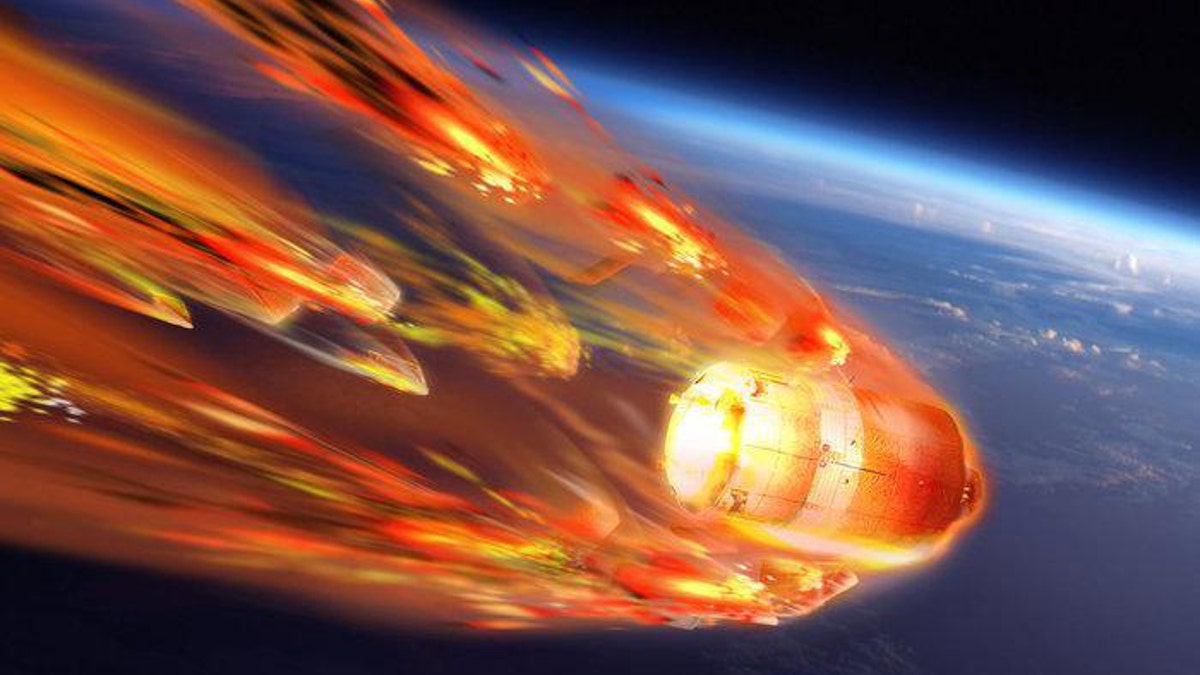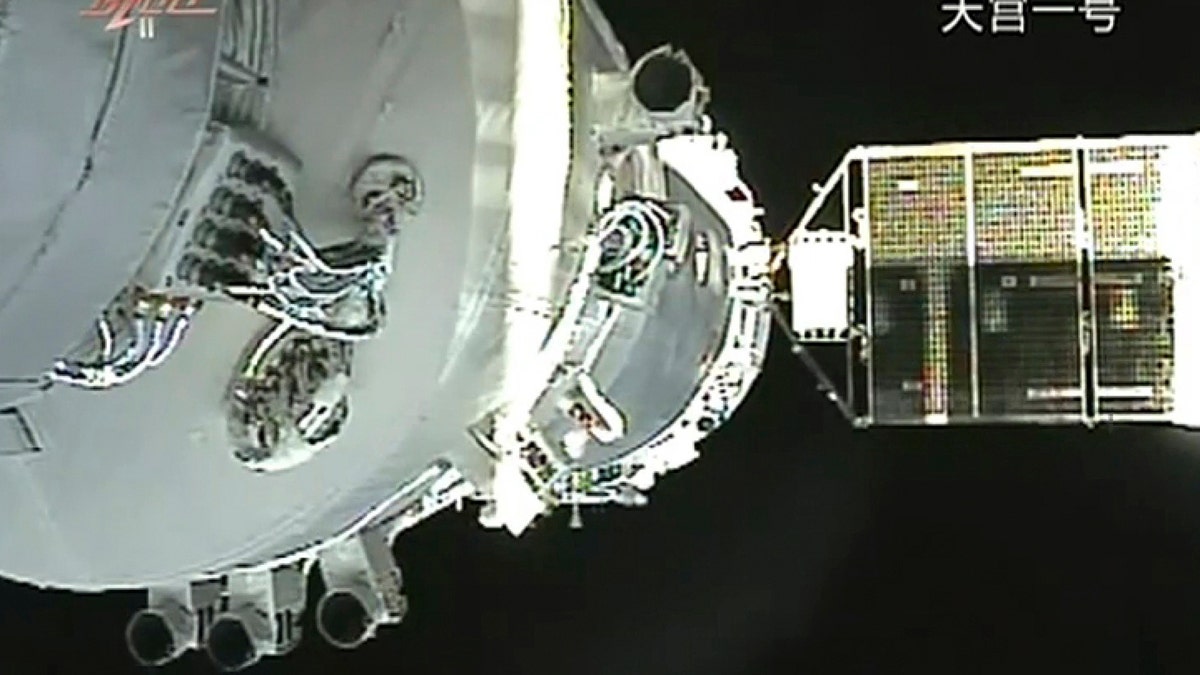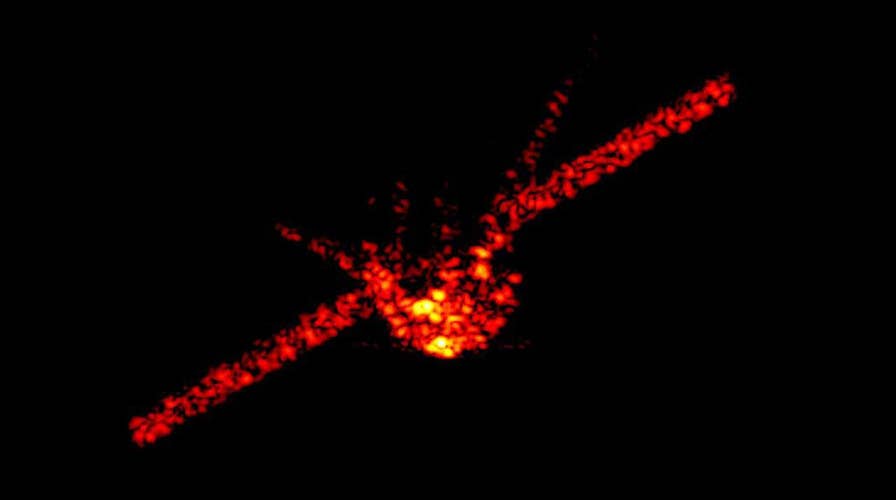Chinese space station expected to crash land to Earth soon
Bryan Llenas reports on where and when experts predict the defunct space station may land.
A defunct Chinese space lab has re-entered Earth's atmosphere and mostly burned up, authorities in Beijing said late Sunday.
It was not immediately clear if the remains of the space station, known as Tiangong-1, had been accounted for. Earlier forecasts had said only about 10 percent of the bus-sized, 8.5-ton spacecraft would likely survive re-entry, mainly its heavier components such as its engines.
The U.S. Strategic Command's Joint Force Space Component Command confirmed that Tiangong-1 re-entered Earth's atmopshere over the South Pacific Ocean at 8:16 p.m. ET.

A rogue Chinese space station that weighs 8.5 tons is hurtling toward Earth. (European Space Agency)
Launched in 2011, Tiangong-1 was China's first space station, serving as an experimental platform for bigger projects, such as the Tiangong-2 launched in September 2016 and a future permanent Chinese space station.
Two crews of Chinese astronauts lived on the station while testing docking procedures and other operations. Its last crew departed in 2013 and contact with it was cut in 2016.

In this June 13, 2013, file image released by China's Xinhua News Agency, the Shenzhou-10 manned spacecraft is seen while conducting docking with the orbiting Tiangong-1 space module. (AP)
Although the Chinese station has received intense media coverage, each year around 1,000 large objects such as lost satellites and rocket stages fall back to Earth. These numbers are projected to increase over the coming years as more and more satellites are placed into orbit.
Only one person is known to have been hit by falling space debris: American woman Lottie Williams, who was struck but not injured by a falling piece of a U.S. Delta II rocket while exercising in an Oklahoma park in 1997.
Most famously, America's 77-ton Skylab crashed through the atmosphere in 1979, spreading pieces of wreckage near the southwestern Australia city of Perth, which fined the U.S. $400 for littering.
The Associated Press contributed to this report.





















